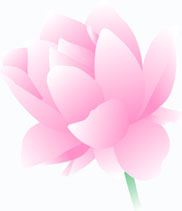PADMA PURANA |
|
 |
Creation of Eight Vasus, Eleven Rudras, Twelve Adityas, Forty nine Marudganas, and Fourteen Manus The initial lot of ‘Prajavarga’was created by ‘Sankalpa’ (Thought), ‘Darshana’ (Vision) and ‘Sparsha’ (Touch).But, the process of creation adopted by the aforesaid methodology was not quick enough as Daksha Pajapati initiated man-woman body contact by which means the process of Srishti became faster and more definitive;by adopting this technique, his wife ‘Veerini’ gave birth to ten Dharmas, thirteen Kashyapas, twenty seven Chadramas, four Agnishtomikaas, two ‘Bhrigu Putras’, two Kushashvas and two Maharshi ‘Angeeras’. |
The broadening the family base took place henceforth. Dharma’s wives were Arundhati, Vasu, Jaami, Lamba, Bhanu, Marutvati, Sankalpa, Muhurta, Sandhya, and Vishwa. Devas were born as follows: Vishwa begot Vishwadeva; Sandhya -naamak Devatas were born of Sandhya; Marutvati gave birth to Marut Devas; Vasu begot ‘Ashta Vasus’; Bhanu gave birth to Bhanu; Muhurtamani Devas were born to Muhurta Devi; from Lamba was born Ghosh; Jaami gave birth to Nagavidhi Kanya; from Arundhati were born all the ‘Praanis’on Earth and Sankalpas were born Sankalpa.These Devas were spread over and illuminated. The Ashta Vasus were Aapa, Dhruva, Soma, Dhara, Anila, Anala, Prathyusha, and Prabhasa. Aapa had four sons viz. Shanta, Vaitanda, Saamba and Muni Babhru and these are ‘Yajna Rakshaka Adhikaaris’ or the Security Officials of Yajnas. Dhruva’s son was called Kaal and Soma’s son was Varcha; Dhara’s sons were Dravina and Havyavaaha; Anil’s putras were Praana, Ramana and Sharira. Anal had several sons and were like Agni; they were born of ‘Sarkhandhis’ (sea shore grass); significant ones of these were Shaakha, Upashaakha and Naigameya. As ‘Krittikas’as well as Agni were responsible in the birth of Skanda Deva, he is also known as Kartikeya. Prathysha’s son was Devala Muni and Vishwakarma Prajapati was the son of Prabhasa and the Architect and Builder of Devas. Ekadasha Rudras viz. Ajaikapaada, Ahirbhudhnya,Virupaaksdha, Raivata, Hara, Bahurupa, Thraimbaka, Saavitra, Jayanta, Pinaki, and Aparajita are the Chiefs of Rudra ganas numbering eighty four crore Ganas, each wearing Trishuls. Kashyapa’s progeny from his wives Aditi, Diti, Danu, Arishta, Surasa, Surabhi, Vinata, Taamna, Krodhavasha, Ira, Kadru, Khasa and Muni was in multitudes. During the present Vaivaswata Manvantara, there are Twelve Adityas Adityas viz. Indra, Dhata, Bhaga, Twashta, Mitra, Varuna, Aryama, Viviswan, Savita, Pusha, Amshuman and Vishnu. These Aditya’s were born to Kashyap and Aditi. Sage Pulastya continued to delineate the process of further Creation to Bhishma. As innumerable Daityas were killed in the series of Deva-Danava battles, especially at the time of ‘Samudra-Manthan’ (Churning of the Ocean) and ‘Amrita Prapti’ (Emergence of Amrita), Devi Diti was mentally shattered and performed severe Tapasya on the banks of River Sarasvati to Surya Deva with the singular objective of killing Indra and Devas. Kashyap assured that her objective should be fulfilled and that she should observe regulations such as reside in a Tapovana, take ample care of her ‘Garbha’, observe single meal a day, never go near a tree, never enter water nor a house/ shadow, keep calm, never hear bad news nor quarrel, never be overjoyed, keep engaged in propitious acts, and so on. As her confinement stage was nearing, Indra entered Diti’s garbha when she was asleep and cut the embrio of the boy about to be born into seven pieces, with each piece being cut into seven further pieces thus making a lot of forty nine pieces.As these pieces started crying, Indra tried to console the, saying :’ma rudah’ ( do not cry); Indra realised that Devi Diti was blessed due to the power of a Vrata that she was asked by Kashyap to perform; he apologised for his heinous act of entering her womb and cutting fortynine pieces of the baby, named the forty nine boys as Marudganas, elevated their status of Devas and made them eligible for sharing the ‘Havis’ or the ‘Yagna Phal’ and with veneration gave all the facilities due to Devas; and flew them across to Swargaloka along with Diti Devi, the Daitya Mata. Having described the Adi Sarga (Creation) and Pratisarga (Reabsorption), Sage Pulastya provided an overview of Manvavantaras to King Bhishma. Swayambhu, Swarochisha, Uouttama, Tamasa, Raivata and Chakshusa were the earlier six Manus and the on-going Seventh Manvantara is of Vaivaswata. During this period the Sapta Rishis are Atri, Vasishtha, Kashyapa, Gautama, Bharadwaja, Vishwamitra and Jamadagni.The future Manus are scheduled to be Sanavarnya, Rouchya, Bhoutya, Meru Savarnya, Ribhu, Veetadhama and Vishvaksena, thus totalling fourteen Manus. |
|
| Padma Purana Home | Next: æPitrasÆ and Shraddha VidhanaÆ in brief |
Back to the News Page